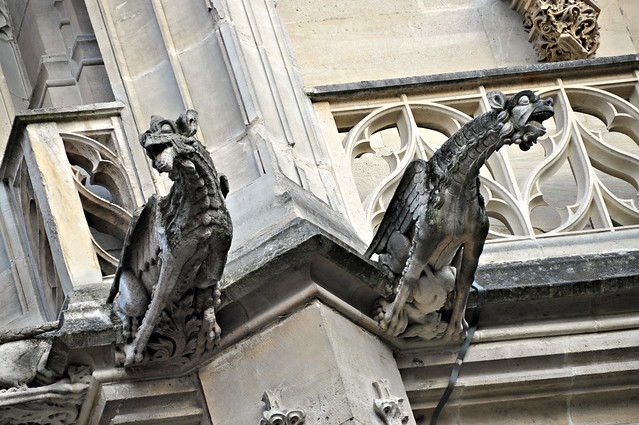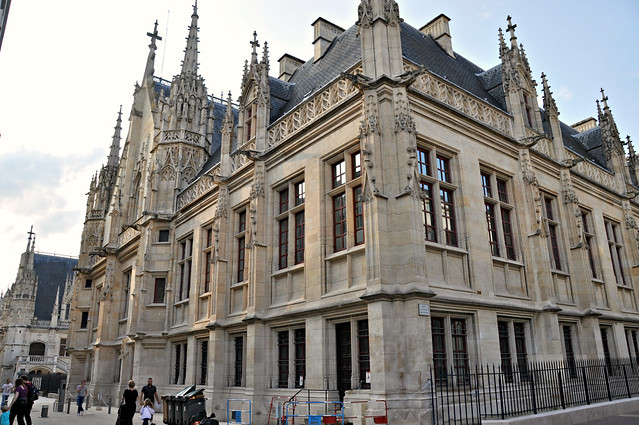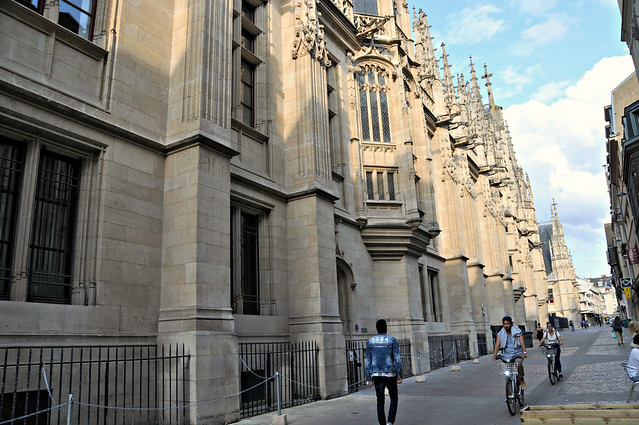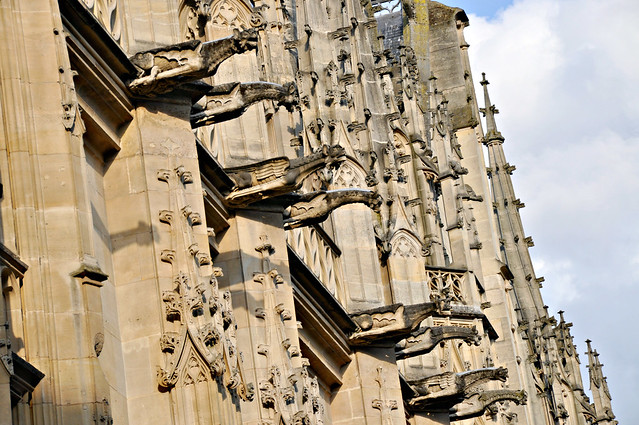
É um dos mais importantes edificios da cidade Rouen, em parte porque é onde funciona o Tribunal e pela sua extraordinária arquitetura gótica. Pela sua função não é possível visitar o seu interior mas em teoria se está aberto é possível visitar o pátio.
Foi construído em 1499 para albergar a corte das Finanças da cidade a que chamavam "Echiquier", dezasseis anos mais tarde passou a ser o lugar do parlamento da Normandia.
It is one of the most important buildings of the city Rouen, partly because it is where the Court works and also for its extraordinary Gothic architecture. By its function is not possible to visit the inside but in theory when it is open you can visit the courtyard.
It was built in 1499 to house the court of Finance of the city which they called the "Echiquier", sixteen years later it became the place of the Normandy parliament.
It was built in 1499 to house the court of Finance of the city which they called the "Echiquier", sixteen years later it became the place of the Normandy parliament.

O seu estilo gótico explica a elaborada decoração exterior, em particular as gárgulas junto a cada pilar. Na Segunda Guerra Mundial, durante a Batalha da Normandia no ano de 1944, os bombardeios dos aliados deixaram a sua marca neste belo edificio que foi depois recuperado. Foram os canadianos que conseguiram libertar a cidade mas até chegarem, uma boa parte foi consumida em chamas e outra destruída pelos bombardeios.
Its Gothic style explains the elaborate exterior decoration, particularly the gargoyles next to each pillar. In the Second World War, during the Battle of Normandy in 1944, the Allied bombing left their mark on this beautiful building which was later recovered. It was the Canadians who managed to liberate the city but until they arrive, much was consumed in flames and another part bombed.



Our guide of:


Sem comentários:
Enviar um comentário